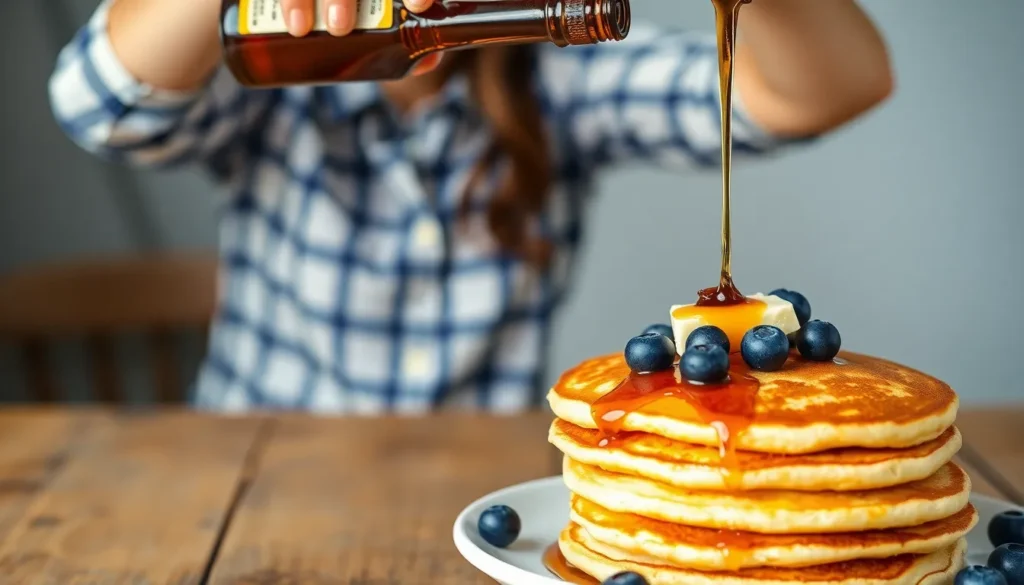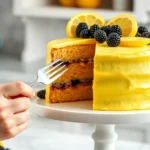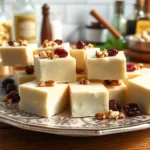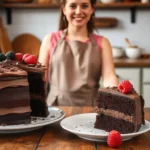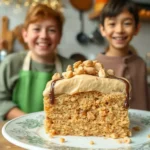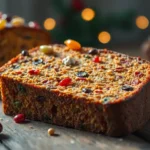Nothing beats the smell of fluffy American pancakes sizzling on a hot griddle on a lazy weekend morning. These thick cloud-like beauties have been gracing breakfast tables across America for generations and we’re here to help you master the art of making them from scratch.
What sets American pancakes apart from their international cousins is their incredible height and pillowy texture. The secret lies in the perfect balance of leavening agents and the gentle mixing technique that creates those coveted air pockets. When done right these pancakes practically float off your plate.
We’ve perfected this recipe through countless kitchen experiments to bring you pancakes that are golden brown on the outside and impossibly fluffy on the inside. Whether you’re feeding a hungry family or treating yourself to a special breakfast these pancakes will become your new go-to comfort food that never fails to impress.
Ingredients
We’ve carefully selected each ingredient to create the perfect balance of lift and flavor for our fluffy American pancakes. These simple pantry staples work together to deliver the signature height and tender crumb we’re after.
Dry Ingredients
- 2 cups all-purpose flour
- 2 tablespoons granulated sugar
- 2 teaspoons baking powder
- 1 teaspoon salt
- 1/2 teaspoon baking soda
Wet Ingredients
- 1 3/4 cups whole milk
- 2 large eggs
- 4 tablespoons unsalted butter, melted and slightly cooled
- 1 teaspoon vanilla extract
Equipment Needed
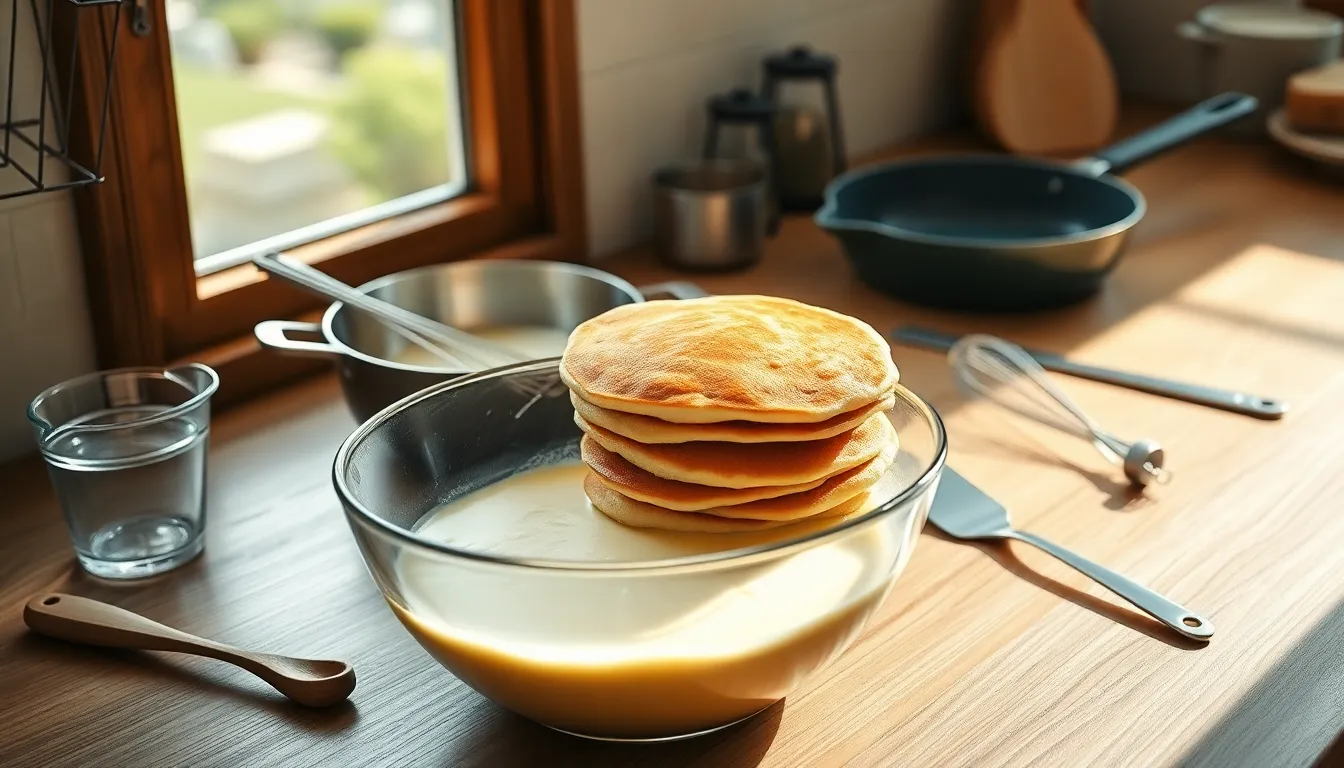
Having the right tools makes all the difference when creating perfectly fluffy American pancakes. We recommend gathering these essential items before you begin mixing your batter to ensure a smooth cooking process.
Large mixing bowl serves as your primary workspace for combining ingredients. The bowl should provide ample room for gentle folding without batter splashing over the edges.
Whisk becomes crucial for properly combining wet ingredients and creating the smooth mixture that forms our pancake base. A medium-sized whisk works best for achieving the right consistency without overworking the batter.
Measuring cups and spoons ensure accuracy in our carefully balanced recipe. Precise measurements of flour, milk, and leavening agents directly impact the final texture and rise of your pancakes.
Non-stick frying pan or griddle provides the ideal cooking surface for achieving golden brown exteriors while maintaining fluffy interiors. A 10 to 12-inch pan allows you to cook multiple pancakes simultaneously.
Spatula enables smooth flipping without deflating the delicate structure we’ve worked to create. Choose a thin, flexible spatula that slides easily under the pancakes.
These basic tools work together to transform our carefully measured ingredients into the thick, fluffy pancakes that define American breakfast cuisine. Each piece of equipment plays a exact role in maintaining the light texture and even cooking that makes these pancakes exceptional.
Instructions
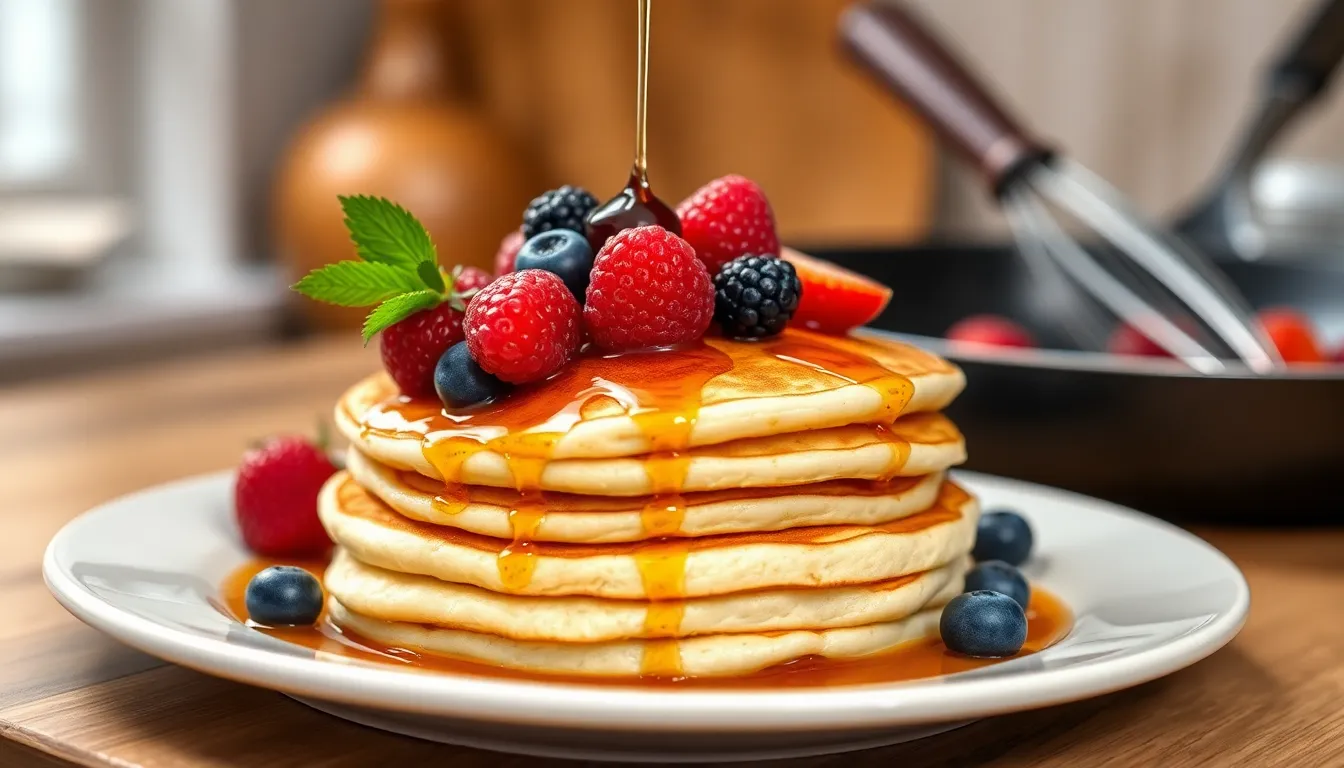
Now we’ll transform our carefully measured ingredients into perfectly fluffy American pancakes. Each step builds toward achieving that signature height and tender texture.
Prep the Batter
We start by combining our dry ingredients in the large mixing bowl. Whisk together the 2 cups all-purpose flour, 2 tablespoons granulated sugar, 2 teaspoons baking powder, 1 teaspoon salt, and 1/2 teaspoon baking soda until evenly distributed.
Next we create our wet ingredient mixture in a separate bowl. Pour in the 1 3/4 cups whole milk, crack in our 2 large eggs, add the 4 tablespoons melted unsalted butter, and stir in the 1 teaspoon vanilla extract. We whisk this mixture until the eggs are fully incorporated and the butter is evenly distributed.
The crucial step comes when we combine wet and dry ingredients. Pour the wet mixture into the flour mixture and gently fold together using our whisk. We stop mixing the moment we no longer see dry flour streaks. Small lumps are perfectly fine and actually help create our desired fluffy texture.
Heat the Pan
We preheat our non-stick frying pan or griddle over medium heat for about 2 minutes. The surface temperature should reach approximately 375°F for optimal results. We test readiness by sprinkling a few drops of water onto the surface. The water should sizzle and evaporate within 2-3 seconds.
Light greasing ensures easy release without adding excess oil. We brush a thin layer of melted butter across the cooking surface or use a paper towel to spread it evenly.
Cook the Pancakes
Our batter portions should measure about 1/4 cup per pancake for consistent sizing. We pour the batter onto the heated surface and watch for the telltale signs of readiness. Small bubbles will form across the pancake surface after 2-3 minutes, and the edges will appear set and slightly dry.
The flip happens when bubbles pop and leave small holes that don’t immediately fill back in. We slide our thin spatula under the pancake and flip it in one smooth motion. The second side cooks faster, requiring only 1-2 minutes to achieve that golden brown color.
We maintain consistent heat throughout cooking to prevent burning or undercooking. Each batch builds our confidence as we develop the perfect timing rhythm.
Serve and Enjoy
Fresh off the griddle delivers the best texture and temperature. We stack our pancakes on warmed plates to maintain their fluffy interior. Classic maple syrup pairs beautifully with the vanilla notes in our batter.
Additional toppings can include fresh berries, whipped butter, powdered sugar, or sliced bananas. We serve immediately while the pancakes retain their optimal height and warmth for the most satisfying breakfast experience.
Tips for Extra Fluffy Pancakes
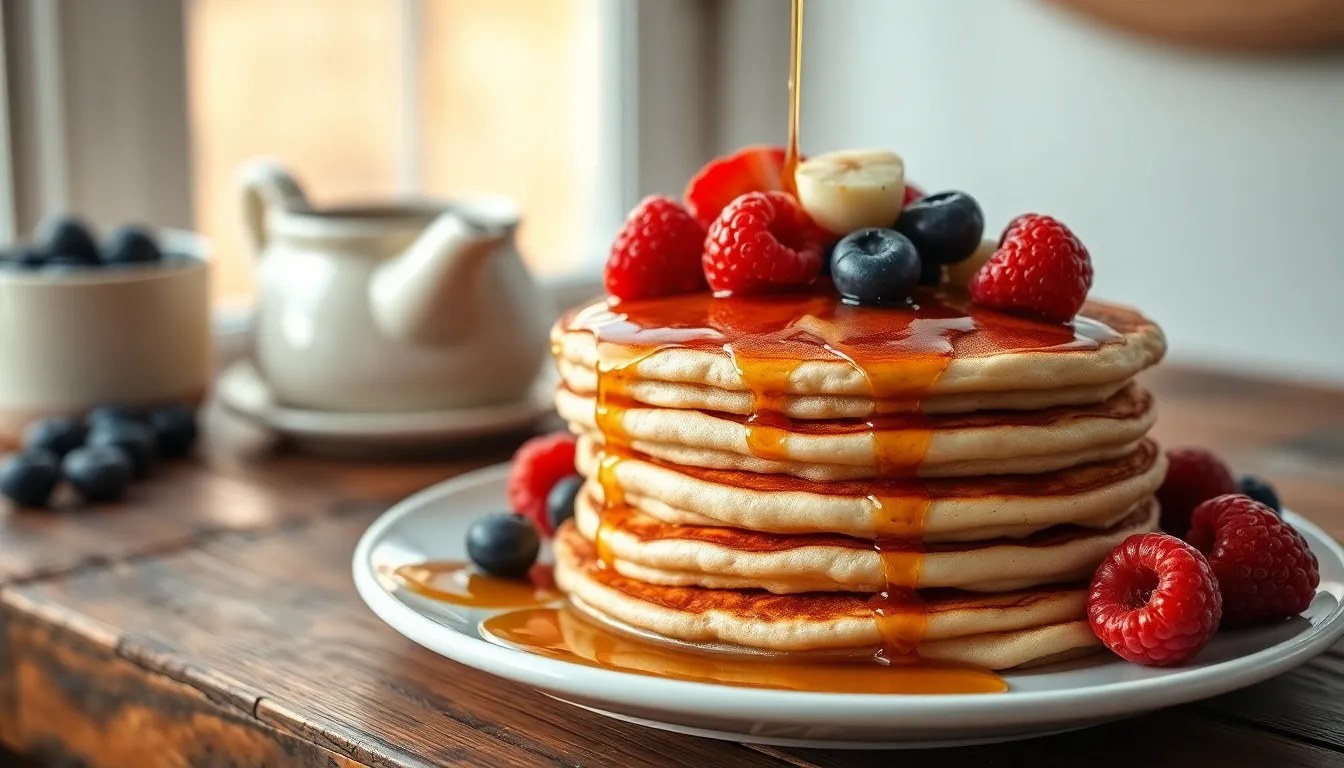
Creating the perfect fluffy American pancakes requires mastering several key techniques that transform ordinary batter into extraordinary breakfast magic. We’ve gathered essential tips that make the difference between flat disappointments and towering breakfast perfection.
Never Overmix the Batter
The most critical mistake we see home cooks make is overmixing their pancake batter. Gentle folding preserves the air bubbles that create fluffiness while aggressive stirring develops gluten strands that lead to dense results. We recommend mixing just until ingredients combine with a few lumps remaining visible.
Check Your Baking Powder Freshness
Fresh baking powder acts as the primary leavening agent in our fluffy pancakes. Testing your baking powder before use ensures proper activation and maximum rise. We suggest replacing baking powder every six months for optimal results since old powder loses its effectiveness over time.
Allow Batter to Rest
Resting the mixed batter for 5 to 10 minutes creates magical transformations within the mixture. During this time the baking powder activates fully while flour particles hydrate completely. We notice significantly fluffier results when we incorporate this simple waiting period into our routine.
Choose the Right Milk
Full-fat milk provides richness and moisture that contributes to tender pancake texture. Buttermilk offers an excellent alternative that adds tanginess while creating extra tenderness through its acidic properties. We avoid skim milk since it lacks the fat content necessary for optimal fluffiness.
Master the Cooking Temperature
Medium-low heat prevents burning while ensuring even cooking throughout each pancake. High temperatures create crispy exteriors before interiors cook properly while low temperatures result in pale unappealing surfaces. We preheat our pan thoroughly before adding batter for consistent results.
Avoid Overcrowding the Pan
Cooking one or two pancakes at a time prevents spreading and ensures even heat distribution. Overcrowded pans create uneven cooking while making flipping difficult. We find that patient cooking produces superior results compared to rushing the process with multiple pancakes simultaneously.
Topping Ideas
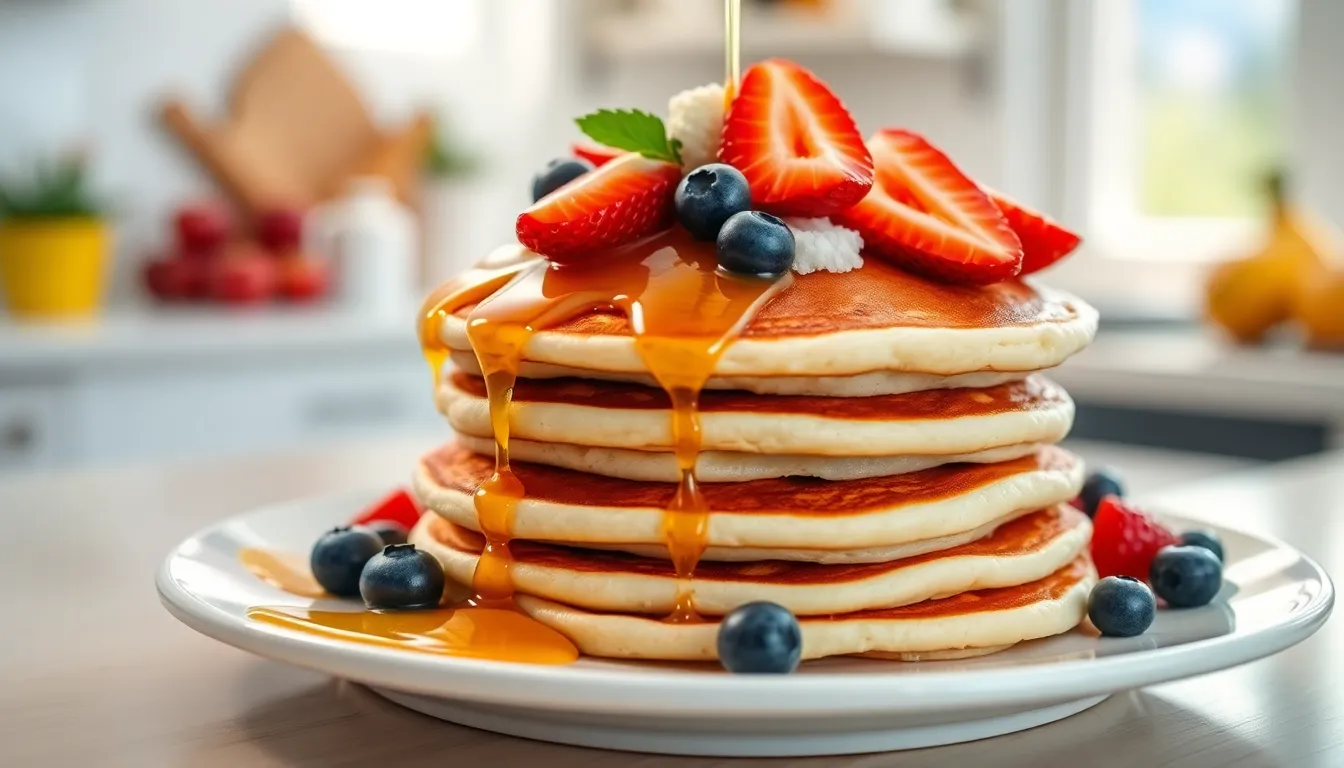
Once we’ve achieved those perfect golden brown pancakes with their signature fluffy texture, the fun really begins with choosing the ideal toppings. Our selection of toppings can transform these breakfast classics into personalized culinary experiences that cater to every taste preference.
Fresh Fruit Options
Fresh fruits provide natural sweetness and vibrant colors that complement the neutral flavor of our fluffy pancakes. We love adding blueberries, strawberries, and raspberries for their burst of tartness that balances the pancakes’ richness. Sliced bananas work beautifully when we caramelize them in a pan with a touch of butter and brown sugar for extra depth of flavor. Sautéed apples or peaches bring warmth and seasonal appeal to our breakfast table.
Sweet Indulgences
Classic maple syrup remains the gold standard for pancake toppings, but we enjoy exploring other sweet options that elevate our breakfast experience. Whipped cream adds lightness and luxury to each bite. Chocolate chips can be sprinkled on top or folded into the batter during the final mixing stage. Nutella creates a rich, hazelnut flavor profile that pairs exceptionally well with strawberries. Caramel sauce provides a buttery sweetness that flows beautifully over our fluffy stacks. Colorful sprinkles bring joy and whimsy to weekend family breakfasts.
Savory Combinations
We often surprise guests by offering savory toppings that transform pancakes into hearty brunch fare. Crispy bacon strips provide a salty crunch that contrasts perfectly with the soft pancake texture. Fried eggs create a complete protein rich meal when placed on top of our pancake stack. Hashbrowns add crispy potato goodness for those seeking a more substantial breakfast. Avocado slices bring healthy fats and creamy texture to our morning meal. Ricotta or cottage cheese offers additional protein while maintaining the light breakfast feel.
Nut Butters and Spreads
Protein rich nut butters serve as both flavor enhancers and nutritional boosters for our pancakes. Peanut butter melts slightly when spread on warm pancakes, creating a creamy coating. Cookie butter provides an indulgent spread that tastes like breakfast dessert. Toasted nuts such as hazelnuts or almonds add textural contrast and nutty flavors that complement the pancakes’ mild taste.
| Topping Category | Popular Options | Best Pairings |
|---|---|---|
| Fresh Fruits | Blueberries, strawberries, caramelized bananas | Whipped cream, maple syrup |
| Sweet Treats | Maple syrup, chocolate chips, Nutella | Fresh berries, nuts |
| Savory Options | Bacon, fried eggs, avocado | Hashbrowns, cheese |
| Spreads | Peanut butter, cookie butter | Bananas, berries |
Storage and Reheating
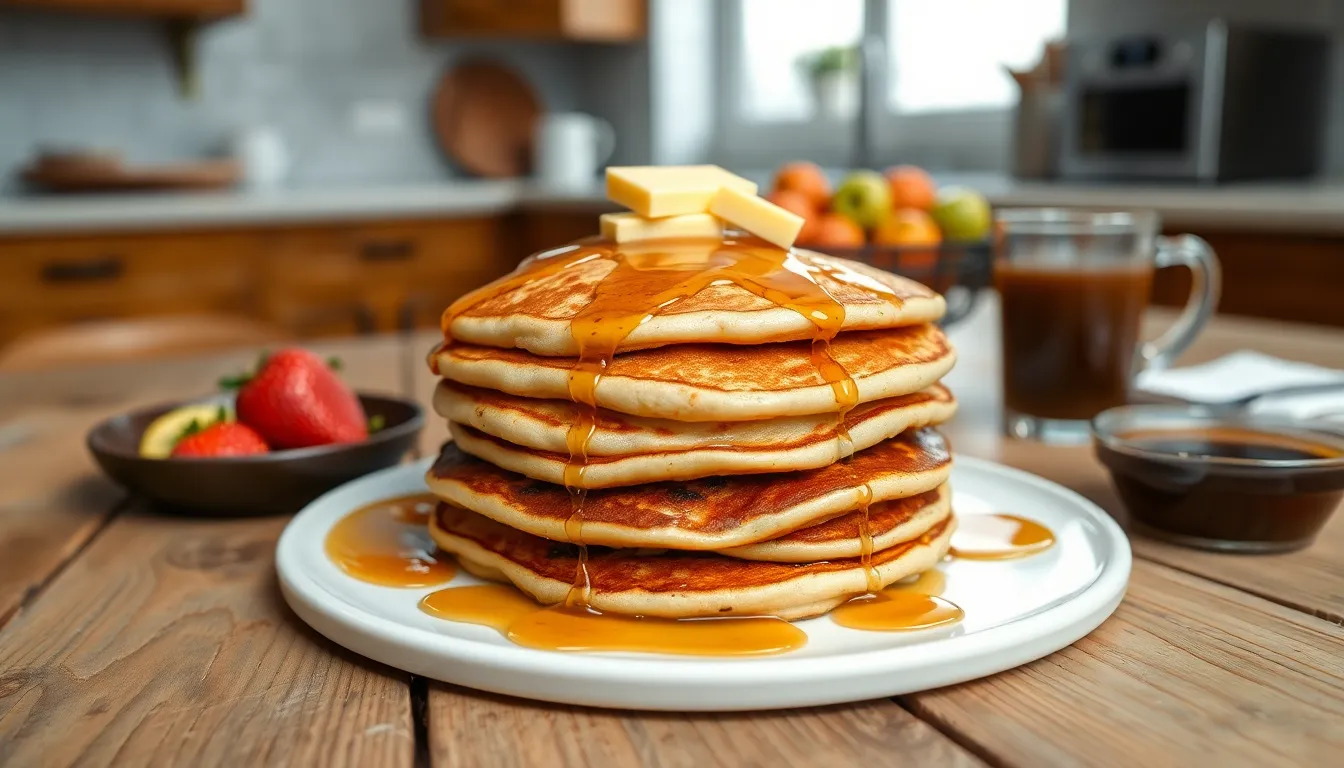
We understand that making fluffy American pancakes often results in more than you can eat in one sitting. Proper storage techniques ensure your delicious pancakes maintain their quality for future enjoyment.
Storage Options
Short-term Storage: Our freshly made pancakes taste best when enjoyed the same day. You can store them for up to 3 days in an airtight container or cover them with clingfilm on a plate.
Refrigerated Storage: We recommend allowing your pancakes to cool completely before placing them in an airtight container or wrapping them with foil. Your pancakes will stay fresh in the refrigerator for about 5-6 days.
Freezer Storage: For longer storage, we suggest freezing your pancakes using this method:
- Cool the pancakes completely
- Place them in a single layer on a parchment-lined baking sheet
- After 30 minutes, transfer them to a freezer bag or container
- Separate layers with parchment paper if stacking
- Store for up to 3 months
| Storage Method | Duration | Container Type |
|---|---|---|
| Room Temperature | 3 days | Airtight container or clingfilm |
| Refrigerated | 5-6 days | Airtight container or foil wrap |
| Frozen | 3 months | Freezer bag with parchment paper |
Reheating Methods
Microwave Reheating: We find this method most convenient for quick results. Place frozen pancakes in a single layer on a microwave-safe plate and heat on full power for 1-2 minutes until hot throughout.
Toaster Reheating: This approach works perfectly for reheating just a few pancakes. Simply place them in your toaster or toaster oven and heat until warm.
Oven Reheating: We prefer this method for maintaining the best texture. Preheat your oven to 350°F, place the pancakes on a foil-covered baking sheet, and warm for about 5 minutes.
Make-Ahead Instructions
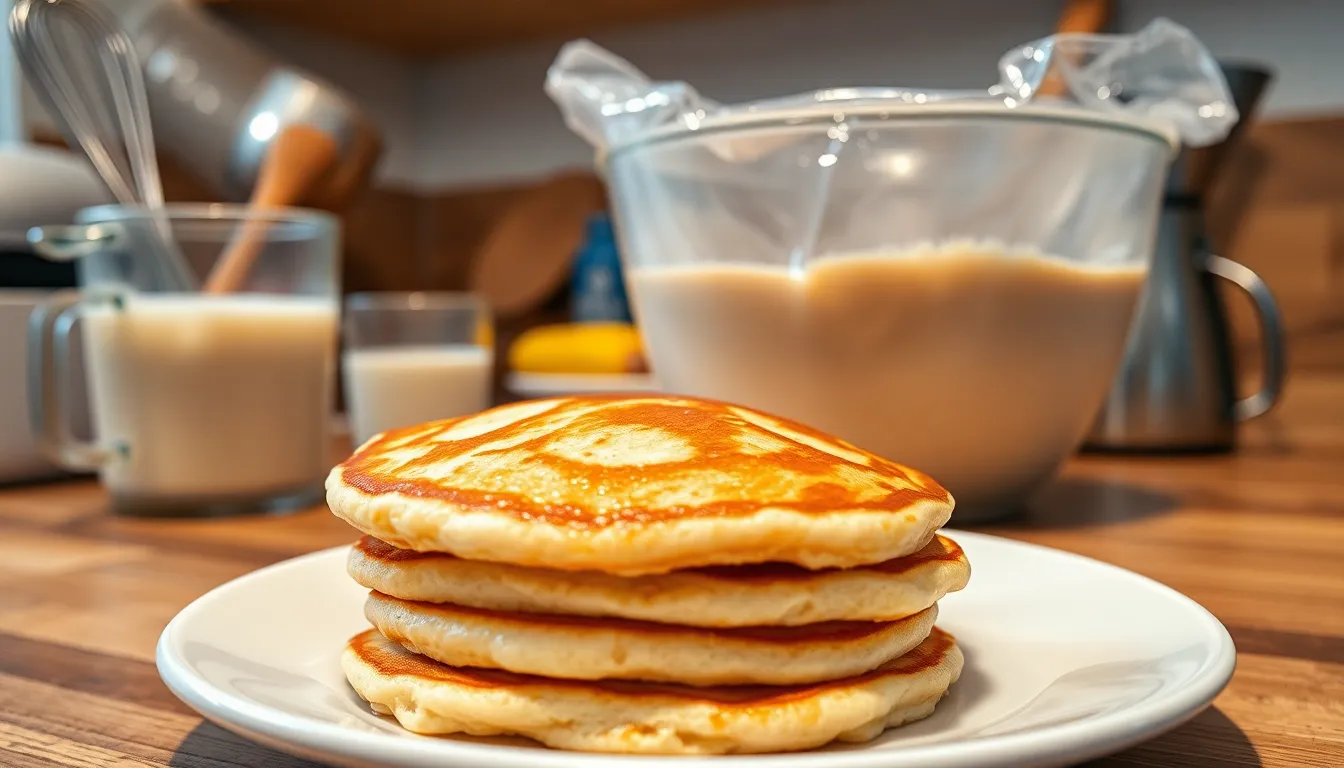
We understand that busy mornings often leave little time for preparing fresh pancake batter from scratch. Our make-ahead method allows you to enjoy fluffy American pancakes without the morning rush while maintaining their signature light texture.
The evening before serving, we combine all ingredients following our standard mixing technique. After gently folding the wet and dry ingredients together, we cover the bowl tightly with plastic wrap and refrigerate the batter overnight. This preparation method saves valuable morning time while preserving the leavening power of our baking powder and baking soda.
Refrigerated batter undergoes slight changes during storage that we easily address the next morning. The mixture typically thickens as the flour absorbs more liquid overnight. We give the chilled batter a gentle whisk to recombine the ingredients and restore proper consistency. Adding a splash of milk helps achieve the ideal pouring texture if the batter appears too thick.
Fresh cooking remains essential for optimal results even with prepared batter. We cook the pancakes immediately after removing the batter from refrigeration and adjusting consistency. The cold batter may require slightly longer cooking time, so we watch for the characteristic bubble formation and set edges before flipping.
Our make-ahead approach works best when batter is used within 24 hours of preparation. Beyond this timeframe, the leavening agents lose effectiveness and pancake height diminishes. We avoid storing batter longer than overnight to ensure our pancakes maintain their signature fluffy texture and golden brown appearance.
For families with varying schedules, we portion the prepared batter into smaller containers. This method allows cooking fresh pancakes throughout the morning without exposing the entire batch to repeated temperature changes. Each portion maintains optimal freshness until ready for the griddle.
Troubleshooting Common Issues
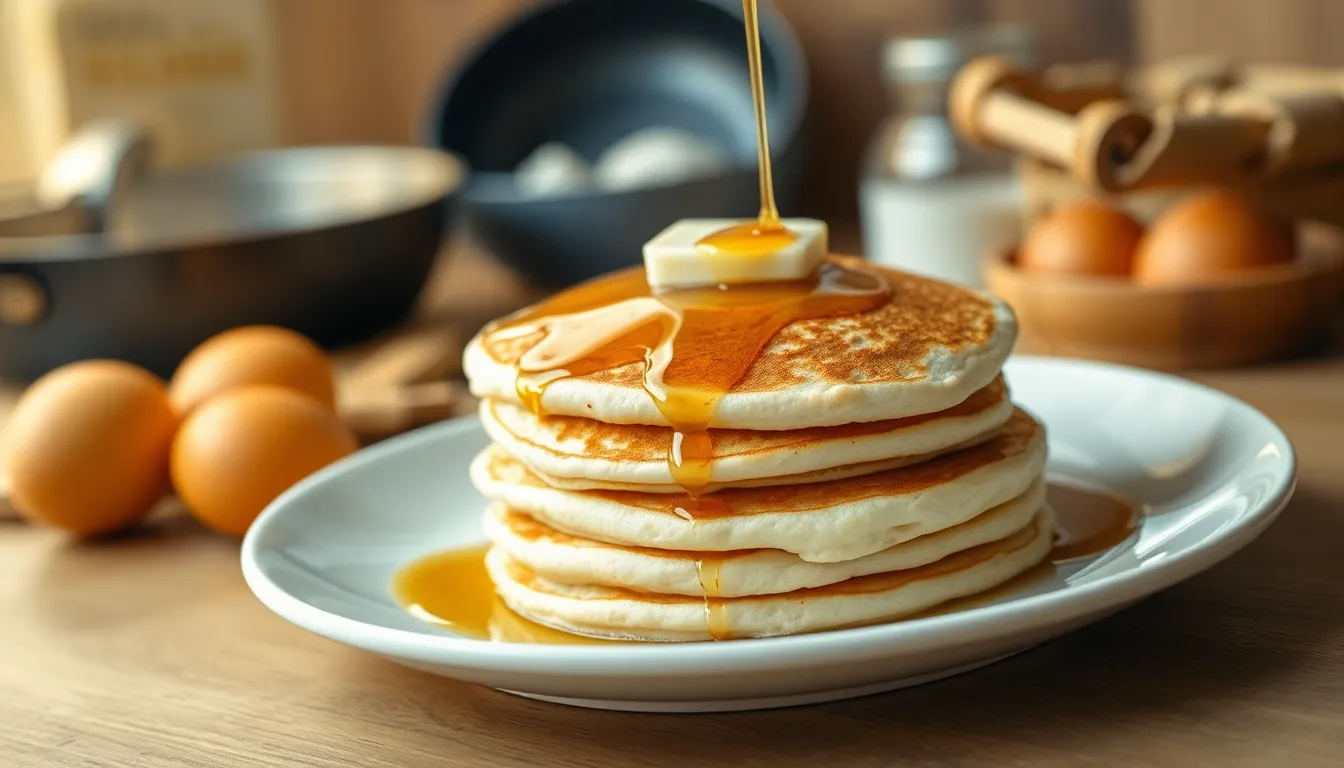
Even with the best intentions and careful preparation, pancake-making can present unexpected challenges. We’ve compiled the most common problems our readers encounter and their effective answers to help you achieve consistently fluffy American pancakes.
Lumpy Pancake Batter
Lumpy batter often results from moisture trapped in flour or inadequate mixing techniques. We recommend using a fork to break up stubborn lumps by pressing them against the bowl sides. Mix the batter lightly to prevent overdevelopment while ensuring smooth consistency. Remember that gentle folding preserves the air bubbles essential for our signature fluffy texture.
Flat Pancakes
Nothing disappoints more than pancakes that refuse to rise properly. Inactive leavening agents or insufficient amounts typically cause this frustrating issue. We suggest testing your baking powder by mixing a small amount with water – fresh baking powder should fizz vigorously. Replace any baking powder that fails this simple test and double-check your measurements to ensure adequate leavening power.
Burnt Pancakes
High heat or burnt oil residue can quickly ruin an otherwise perfect batch. When this happens, we cool the pan under cold running water and reduce heat to medium-high. Properly grease the clean pan and pour batter immediately for optimal results. Temperature control remains crucial for achieving that golden brown exterior without burning.
Thin Pancakes
Excessive liquid or insufficient leavening creates disappointingly thin pancakes that lack our desired thickness. We address this by gradually adding more flour to thicken the batter consistency. Always verify that you’ve used the correct amount of leavening agents according to our recipe specifications.
Dry and Crumbly Pancakes
Overmixing or excessive flour measurements lead to tough, crumbly pancakes. We solve this by mixing ingredients just until combined and using the spoon-and-level method for accurate flour measurement. Add more liquid gradually if the batter appears too thick or dry.
Gummy Pancakes
Overmixing develops gluten excessively, creating unpleasantly gummy pancakes. We prevent this by mixing the batter with light, gentle strokes that barely combine the ingredients. Stop mixing as soon as you no longer see streaks of flour.
| Common Issue | Primary Cause | Quick Solution |
|---|---|---|
| Lumpy Batter | Moisture in flour | Use fork to break lumps |
| Flat Pancakes | Inactive leavening | Test and replace baking powder |
| Burnt Pancakes | High heat | Cool pan, reduce temperature |
| Thin Pancakes | Too much liquid | Add more flour gradually |
| Dry Pancakes | Overmixing/too much flour | Mix gently, measure accurately |
| Gummy Pancakes | Overmixing | Light mixing only |
For consistently fluffy pancakes, we emphasize using buttermilk, allowing batter to rest, and maintaining steady heat throughout cooking. Keep all ingredients fresh and avoid overmixing at every stage of preparation.
Conclusion
We’ve covered everything you need to create restaurant-quality fluffy American pancakes right in your own kitchen. From mastering the perfect batter consistency to choosing the ideal toppings these techniques will transform your breakfast routine.
The key lies in understanding that great pancakes aren’t just about following a recipe – they’re about respecting the process. Gentle mixing proper heat control and quality ingredients make all the difference between dense disappointing pancakes and the towering fluffy stacks we all crave.
Whether you’re making them fresh for Sunday brunch or preparing batter the night before for busy weekday mornings you now have all the tools and knowledge needed. Your family will notice the difference and weekend breakfasts will never be the same again.
Frequently Asked Questions
What makes American pancakes different from other types of pancakes?
American pancakes are distinguished by their unique height and fluffy texture. They achieve this through the right balance of leavening agents (baking powder and baking soda) and careful mixing techniques that create air pockets, resulting in thick, golden brown pancakes that are fluffy inside rather than thin and flat like other pancake varieties.
What are the essential ingredients for fluffy American pancakes?
The key ingredients include 2 cups all-purpose flour, 2 tablespoons granulated sugar, 2 teaspoons baking powder, 1 teaspoon salt, 1/2 teaspoon baking soda, 1 3/4 cups whole milk, 2 large eggs, 4 tablespoons melted unsalted butter, and 1 teaspoon vanilla extract. This combination creates the perfect balance of lift and flavor.
What equipment do I need to make perfect pancakes?
Essential equipment includes a large mixing bowl, medium-sized whisk, accurate measuring cups and spoons, a non-stick frying pan or griddle, and a thin, flexible spatula. Each tool plays a crucial role in transforming ingredients into fluffy pancakes and ensuring even cooking without deflating the batter.
How do I prevent my pancakes from being flat or dense?
Avoid overmixing the batter – gently fold ingredients together to preserve air bubbles. Check that your baking powder is fresh, let the batter rest for 5-10 minutes, use full-fat milk or buttermilk, and cook on medium-low heat. These techniques maintain the fluffiness essential for perfect American pancakes.
Can I make pancake batter ahead of time?
Yes, you can prepare pancake batter the night before and refrigerate it. Gently whisk the chilled batter before cooking and add a splash of milk if needed to adjust consistency. Use the batter within 24 hours for optimal results and consider portioning it for convenience.
How should I store and reheat leftover pancakes?
Fresh pancakes last 3 days at room temperature in airtight containers, or 5-6 days refrigerated. For longer storage, freeze them in single layers on baking sheets, then transfer to freezer bags. Reheat using microwave, toaster, or oven methods to maintain texture and quality.
What are the best toppings for American pancakes?
Popular options include fresh fruits (blueberries, strawberries, bananas), sweet additions (maple syrup, whipped cream, Nutella), savory choices (bacon, fried eggs, avocado), and nut butters (peanut butter, almond butter). Mix and match based on your preference for sweet or savory breakfast experiences.
Why are my pancakes turning out gummy or tough?
Gummy pancakes typically result from overmixing the batter, which develops too much gluten. Mix ingredients just until combined – lumps are okay. Also ensure your baking powder is fresh and avoid pressing down on pancakes while cooking, as this can compress the fluffy texture.

